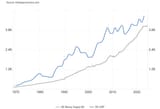Search Results
ID: A6FtYMBp/biz/60690807#60693155
7/26/2025, 10:37:10 AM
>>60692896
>jew hating thread
Not my fault that truth is highly antisemitic.
>infographics start getting posted
Oh noes, a goy is trying to teach his fellow goyim how jewish scams work.
>it's so predictable
The jewish kvetching about their scams being exposed, yes.
>jew hating thread
Not my fault that truth is highly antisemitic.
>infographics start getting posted
Oh noes, a goy is trying to teach his fellow goyim how jewish scams work.
>it's so predictable
The jewish kvetching about their scams being exposed, yes.
7/9/2025, 2:39:10 PM
7/6/2025, 12:25:29 PM
>>509644441
Further increasing the pressure to print more and ever faster is the propensity of a large part of the population and also some corporations and businesses to NOT spend all the fiat currency they receive as wages, dividends, rents, royalties or payments for goods sold or services rendered as soon as they receive said fiat currency. And instead electing to sit on part of their income as fiat currency savings in a bank. Which parks that fiat currency out of circulation, at least for a while, and thus contracts the circulating supply of fiat currency by expanding the parked supply of fiat currency. Which, in turn, makes it necessary for new fiat currency to be created and injected into circulation (by giving it to people and businesses who don't have fiat currency they would nevertheless like to spend and are willing to borrow it from a bank in order to spend it) to replace, in circulation, the fiat currency which has been parked, out of circulation, by people and business who keep at least part of their savings as fiat currency in a bank.
Yet another intrinsic, fundamental, systemic problem of the capitalist model is that fiat currency flows within it are uneven and asymmetric. For example, people pay more to businesses as payment for their goods or services than people receive back from businesses as wages, dividends, rent or royalties. This is because ALL businesses have at least expenses towards other businesses, such as suppliers and subcontractors, utilities companies. This means that people, as a whole and as a class of economic agent, pay more, on average, to businesses, as a whole and as a class of economic agent, than businesses pay back to people as wages, dividends, rent or royalties. The difference has to be perpetually made up from and through consumer credit. Which is people constantly borrowing money to make up the shortfall/discrepancy between what they need to pay for goods and services they need or want and what they themselves are paid.
Further increasing the pressure to print more and ever faster is the propensity of a large part of the population and also some corporations and businesses to NOT spend all the fiat currency they receive as wages, dividends, rents, royalties or payments for goods sold or services rendered as soon as they receive said fiat currency. And instead electing to sit on part of their income as fiat currency savings in a bank. Which parks that fiat currency out of circulation, at least for a while, and thus contracts the circulating supply of fiat currency by expanding the parked supply of fiat currency. Which, in turn, makes it necessary for new fiat currency to be created and injected into circulation (by giving it to people and businesses who don't have fiat currency they would nevertheless like to spend and are willing to borrow it from a bank in order to spend it) to replace, in circulation, the fiat currency which has been parked, out of circulation, by people and business who keep at least part of their savings as fiat currency in a bank.
Yet another intrinsic, fundamental, systemic problem of the capitalist model is that fiat currency flows within it are uneven and asymmetric. For example, people pay more to businesses as payment for their goods or services than people receive back from businesses as wages, dividends, rent or royalties. This is because ALL businesses have at least expenses towards other businesses, such as suppliers and subcontractors, utilities companies. This means that people, as a whole and as a class of economic agent, pay more, on average, to businesses, as a whole and as a class of economic agent, than businesses pay back to people as wages, dividends, rent or royalties. The difference has to be perpetually made up from and through consumer credit. Which is people constantly borrowing money to make up the shortfall/discrepancy between what they need to pay for goods and services they need or want and what they themselves are paid.
Page 1

